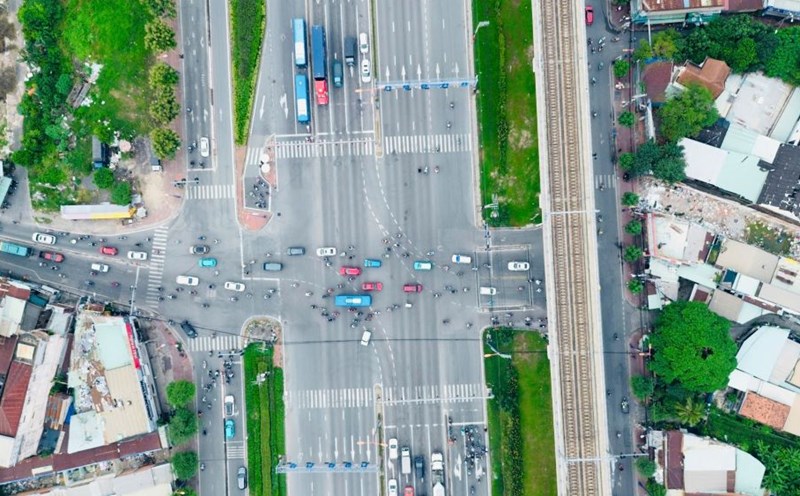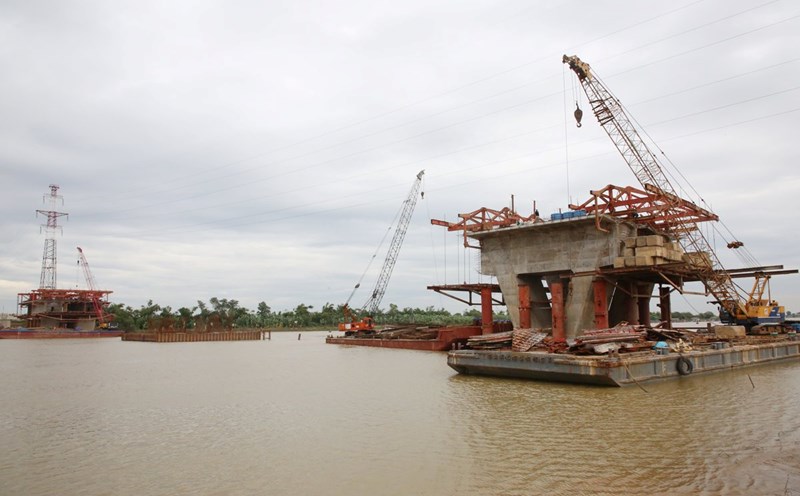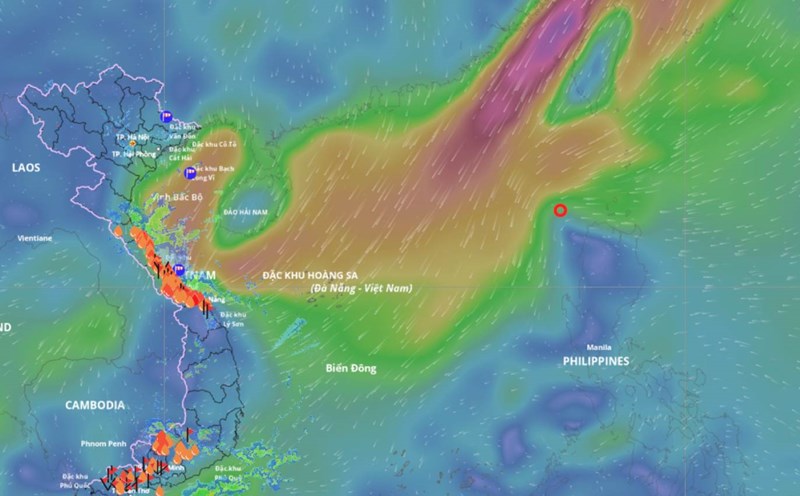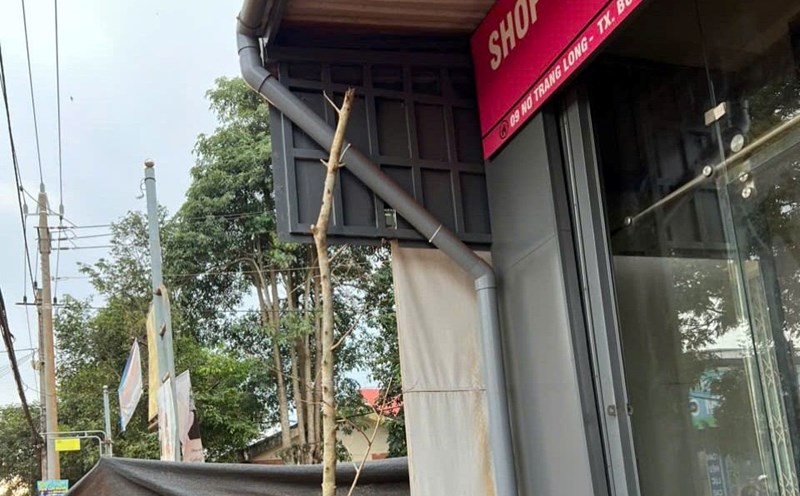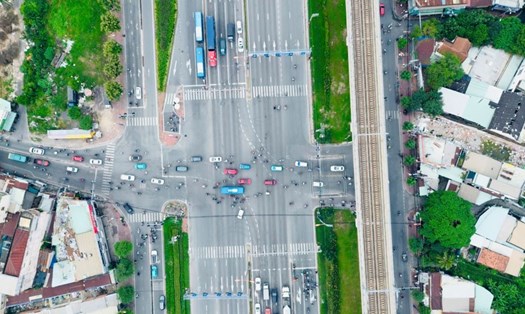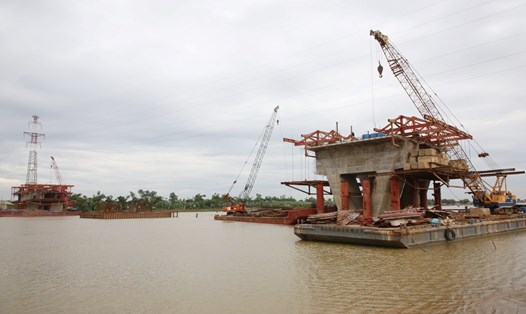Although it is the peak of the rainy season, greatly affecting activities outside the construction site, with the spirit of "overcoming the sun and overcoming the rain", contractors of the Dai Ngai bridge construction project on National Highway 60 in Tra Vinh and Soc Trang provinces (now Vinh Long province and Can Tho city) still maintain an urgent working rhythm, work overtime, increase shifts, determined to ensure progress according to plan.
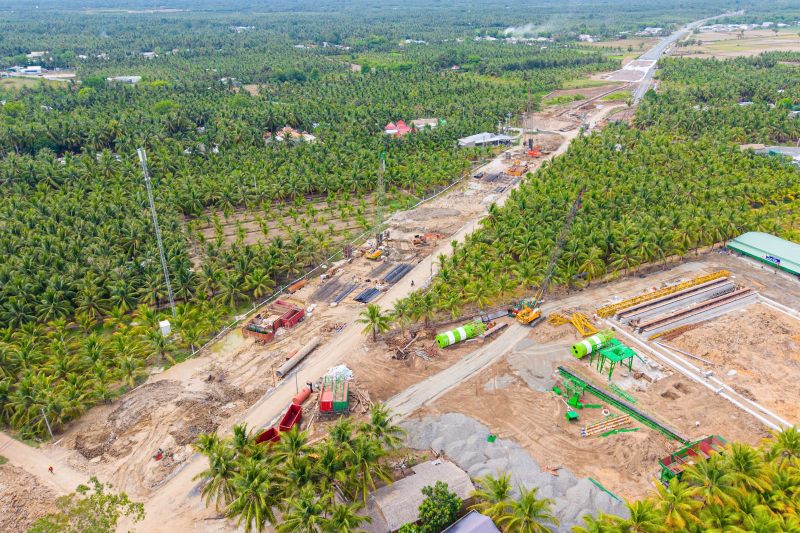
According to Project Management Board 85 (Ministry of Construction) - the project investor, currently, on the entire construction site, construction units have mobilized more than 407 personnel, 141 machines and equipment and deployed 26 construction teams simultaneously. Of which, there are 22 bridge construction teams with a total of 43 technical staff, 282 workers and 120 equipment; along with 4 construction teams of auxiliary works, mobilizing 82 personnel and 21 specialized equipment.
Up to now, the road at both ends of the bridge has completed the construction of embankments, cement piles and is constructing the K95 foundation. Dai Ngai 1 Bridge alone has completed 85% of the volume of bored piles, 45% of the bridge piers and 24% of the Super-T girder, equivalent to 34% of output.
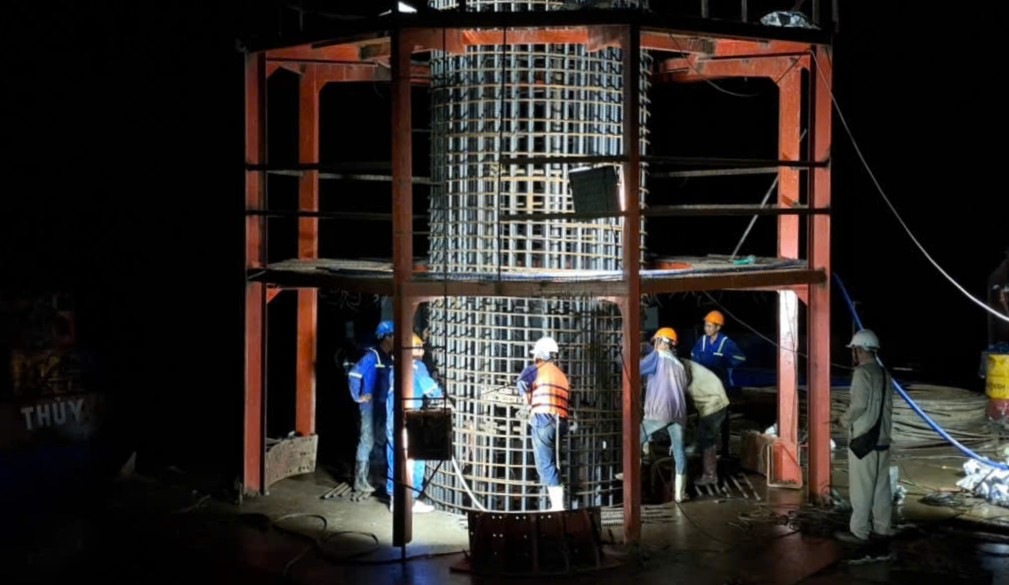
Mr. Trieu Van Toan - Deputy Construction Commander (Bac Trung Nam Construction Joint Stock Company) - said that the unit is constructing T24 pillar - the main pillar of Dai Ngai 1 bridge, with more than 150 engineers and workers. It is expected to complete all deposits before November 20, 2025, 2 months ahead of schedule to move to the bridge deck construction phase.
According to Mr. Toan, the construction area near the estuary is often affected by strong winds and tides, but the contractor has proactively used large cranes and 5,000-ton barges to ensure stability during construction. In the face of high tides, the plan to close the construction floor has been approved by the investor and consultant, helping to effectively control the impact of water levels on progress.
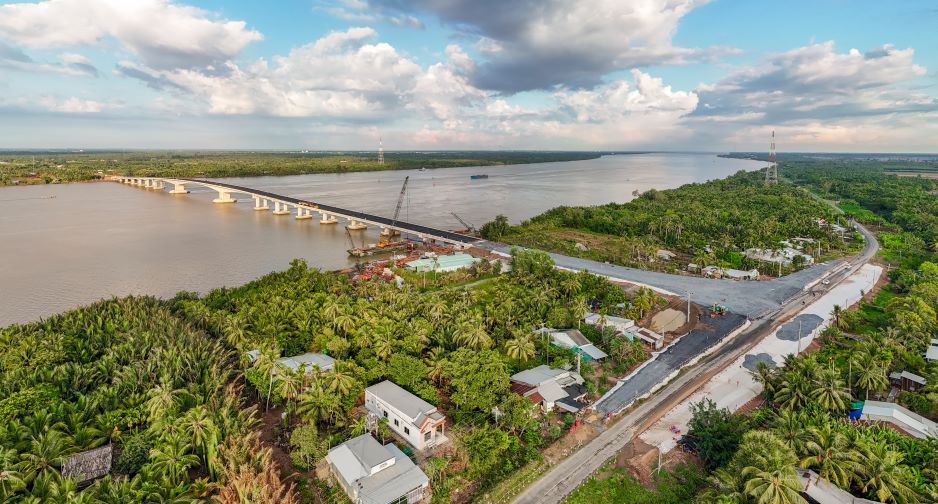
For Dai Ngai 2 Bridge, contractors have mobilized 83 personnel, 68 machines and equipment and deployed 13 construction points (7 points of the route, 4 points of the bridge, 2 points of the embankment to reinforce Tran De channel). Currently, the main bridge has been completed, the local government has proposed to temporarily allow motorbikes to circulate to serve the travel needs of people in Dai Ngai and An Thanh communes (old Cu Lao Dung area). Can Tho City Department of Construction continues to work with Project Management Board 85 to determine the time for opening traffic, monitor the construction progress and promptly remove difficulties.
Previously, on July 28, 2025, the Ministry of Construction approved the adjustment of the investment policy for the Dai Ngai bridge project on National Highway 60, passing through Vinh Long province and Can Tho city. The additional investment route is 12.3 km long, starting from National Highway 91B (Dai Ngai Commune, Can Tho City) to the intersection of National Highway 60 in Soc Trang Ward (Can Tho City) designed according to the standards of a grade III plain road, at a speed of 80 km/h.
The total length of the entire route after adjustment is 27.44 km, of which the bridge section is 3.42 km long (Dai Ngai 1 bridge is 2.56 km long, Dai Ngai 2 bridge is 0.86 km long). The total investment in phase 1 is VND 7,962 billion, from the state budget. According to the plan, it is basically completed in 2027, completed and put into synchronous operation for the entire project in 2028.
Currently, the People's Committee of Can Tho City is coordinating with relevant units to complete site clearance work, serving smooth connections throughout the route. The Land Fund Development Center coordinates with the People's Committees of communes and wards where projects are being implemented to speed up compensation, support, and resettlement, promptly hand over clean land, ensuring construction progress according to plan.
Dai Ngai 1 Bridge is over 3km long, the main bridge is 2.59km long, 21.5m wide, passing through Dinh An channel of Hau River, near the East Sea Gate, connecting from Tra Cu district (Tra Vinh province) to Cu Lao Dung district (Soc Trang province) now Luu Nghiep Anh commune (Vinh Long province) and An Thanh commune (Can Tho city). The main cable-stayed bridge has 2 A-shaped towers 110m high (from the bridge surface), with a main span diagram (210+450+210)m. This is the second largest cable-stayed bridge in Vietnam, after Can Tho Bridge and made of Vam Cong Bridge.


